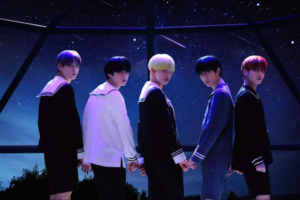The Monogatari Series: Viewing Order, Watch Guide, and Series Explained
The Monogatari series is one of the most beloved and complex anime franchises, captivating fans with its unique storytelling, memorable characters, and intricate plotlines. However, its non-linear narrative and numerous installments can be daunting for newcomers. In this comprehensive guide, we’ll explore the Monogatari series order, provide a detailed Monogatari watch guide, and explain the series’ most essential elements. Whether you’re a seasoned fan or just beginning your journey into the world of Monogatari, this guide will help you navigate the series with ease.
Understanding the Monogatari Series: An Introduction
The Monogatari series, based on the light novels written by Nisio Isin and illustrated by VOFAN, first aired in 2009 with Bakemonogatari. The series quickly gained a dedicated following due to its unique blend of supernatural elements, witty dialogue, and deep character development. What sets Monogatari apart is its non-linear storytelling, where each installment adds layers to the overall narrative, often requiring viewers to pay close attention to the smallest details.
Given the complexity of the Monogatari series, it’s essential to understand the proper viewing order and how each installment fits into the broader story. From Bakemonogatari to Kizumonogatari and beyond, every part of the series contributes to the rich tapestry of the Monogatari universe.
Monogatari Series Order: How to Watch the Series Chronologically
When it comes to the Monogatari series order, there are two main approaches: release order and chronological order. Watching the series in release order allows you to experience the story as it was originally presented to fans, while chronological order follows the events as they happen within the story’s timeline.
Release Order (Recommended for First-Time Viewers):
- Bakemonogatari (2009) – The series introduction.
- Nisemonogatari (2012) – Focuses on Araragi’s sisters.
- Nekomonogatari (Kuro) (2012) – Explores Hanekawa’s story.
- Monogatari Series: Second Season (2013) – Continues various character arcs.
- Hanamonogatari (2014) – Centers on Suruga Kanbaru.
- Tsukimonogatari (2014) – Introduces Yotsugi Ononoki’s story.
- Owarimonogatari (2015) – Provides critical backstory for Araragi.
- Koyomimonogatari (2016) – A collection of short stories.
- Kizumonogatari (2016-2017) – A prequel that details how Araragi became a vampire.
- Owarimonogatari II (2017) – Concludes the main storyline.
- Zoku Owarimonogatari (2018) – An epilogue to the series.
Chronological Order (For a New Perspective):
- Kizumonogatari – Start with Araragi’s transformation.
- Nekomonogatari (Kuro) – Follow with Hanekawa’s story.
- Bakemonogatari – Then move to the series introduction.
- Continue with the remaining installments as listed in release order.
Choosing between these orders depends on your familiarity with the series. New viewers are often encouraged to follow the release order to fully appreciate how the story unfolds.
Monogatari Watch Guide: Essential Tips for Enjoying the Series
Watching the Monogatari series requires more than just knowing the correct order. Here are some essential tips to enhance your viewing experience:
- Pay Attention to the Dialogue: Monogatari is known for its rapid-fire, dialogue-heavy scenes. These conversations are filled with wordplay, puns, and cultural references that add depth to the story. Subtitles can sometimes struggle to capture the full nuance, so it may be worth rewatching certain scenes to catch everything.
- Understand the Characters: Each character in Monogatari has a complex backstory that influences their actions and relationships. Characters like Araragi Koyomi, the series’ protagonist, evolve significantly throughout the series, making it important to follow their development closely.
- Don’t Skip the Openings and Endings: The opening and ending themes often contain visual and lyrical hints about the arc you’re about to watch. These sequences are carefully crafted and provide insight into the characters’ current emotional states.
- Be Prepared for a Non-Linear Narrative: The Monogatari series doesn’t follow a traditional, linear storyline. Episodes may jump between different points in time, requiring viewers to piece together the plot. Embrace the challenge—it’s part of what makes the series so engaging.
Bakemonogatari, Kizumonogatari, and the 2009 Anime: The Core of the Monogatari Universe
Bakemonogatari is where it all began for many fans, as it was the first anime adaptation of Nisio Isin’s light novels. Released in 2009, Bakemonogatari introduces us to Araragi Koyomi and the various oddities he encounters. The series’ blend of supernatural elements and philosophical musings set the tone for the rest of the franchise.
Kizumonogatari serves as a prequel, detailing the events that led to Araragi’s transformation into a vampire. Split into three movies, Kizumonogatari is crucial for understanding the origin of Araragi’s powers and his complex relationship with the vampire Kiss-shot Acerola-orion Heart-under-blade (later known as Shinobu).
These two installments are essential to grasping the foundation of the Monogatari universe. Bakemonogatari hooks you with its unique style, while Kizumonogatari provides the backstory that enriches the entire narrative.
Meet the Monogatari Characters: A Deep Dive into Araragi Koyomi and Others
The Monogatari series is celebrated for its rich cast of characters, each with their own distinct personalities and story arcs. Araragi Koyomi serves as the protagonist, a former vampire who dedicates himself to helping those troubled by oddities. His relationships with other characters, such as Hitagi Senjougahara, Tsubasa Hanekawa, and Shinobu Oshino, form the emotional core of the series.
Araragi Koyomi: As the main character, Araragi’s journey from a self-centered high schooler to a compassionate helper of others is central to the series. His interactions with oddities often mirror his internal struggles, making his character development one of the most compelling aspects of Monogatari.
Hitagi Senjougahara: Araragi’s classmate and eventual girlfriend, Senjougahara, is known for her sharp tongue and troubled past. Her arc in Bakemonogatari is one of the most iconic in the series, showcasing her transformation from a guarded, traumatized individual to someone who learns to trust and love again.
Tsubasa Hanekawa: The ever-reliable class representative, Hanekawa’s story is deeply intertwined with Araragi’s. Her struggles with her darker alter ego, Black Hanekawa, are explored in multiple installments, highlighting the series’ themes of duality and self-acceptance.
Shinobu Oshino: Once a powerful vampire, Shinobu’s bond with Araragi is central to the series. Her complex character evolution—from a fearsome oddity to a more subdued, introspective figure—adds layers of intrigue to the overall narrative.
Understanding these characters and their interactions is key to fully appreciating the Monogatari series. Each character brings something unique to the table, contributing to the series’ depth and emotional resonance.
The Best Episodes of the Monogatari Series: Must-Watch Moments and Highlights
With so many episodes across the Monogatari series, it can be challenging to pinpoint the best moments. However, several episodes stand out as must-watch highlights that capture the essence of what makes Monogatari so special.
Episode 12 of Bakemonogatari – “Hitagi Crab, Part Two”: This episode is pivotal as it concludes Senjougahara’s story arc, revealing her traumatic past and how she confronts it with Araragi’s help. The emotional depth and stunning visual presentation make it a standout episode.
Episode 15 of Monogatari Series: Second Season – “Nadeko Medusa, Part Five”: This episode showcases one of the series’ most shocking twists, as Nadeko Sengoku reveals her true nature. The psychological intensity and unexpected turn of events make this episode unforgettable.
Kizumonogatari Part 3 – “Reiketsu”: The climax of Kizumonogatari delivers an epic battle between Araragi and his former master, Kiss-shot. The animation, music, and emotional stakes are at their peak, making it one of the most thrilling moments in the series.
These episodes are just a few examples of the Monogatari series’ ability to blend deep character exploration with high-stakes drama. Whether you’re watching for the first time or revisiting your favorite arcs, these episodes are sure to leave a lasting impression.
From Light Novel to Screen: How the Monogatari Series Became an Anime Phenomenon
The Monogatari series started as a series of light novels by Nisio Isin, with Bakemonogatari being the first published in 2006. The success of these novels led to their adaptation into an anime, which debuted in 2009. The transition from page to screen was handled by Studio Shaft, known for its innovative and artistic animation style.
Monogatari Light Novel: Nisio Isin’s writing is characterized by its clever wordplay, intricate plots, and deep philosophical questions. These elements translated well to the anime, which retained much of the dialogue-heavy scenes and abstract visual style that fans of the novels loved.
Art and Animation: Studio Shaft’s approach to the Monogatari series is unique in the anime world. The use of sharp color contrasts, unconventional camera angles, and symbolic imagery set the series apart visually from other anime. This style not only captures the surreal nature of the story but also enhances the narrative’s emotional impact.
Cultural Impact: The success of the Monogatari series has made it a cultural phenomenon, influencing other anime and manga. Its unique storytelling approach, combined with its complex characters and philosophical depth, has garnered a dedicated fanbase and critical acclaim.
The Monogatari series’ journey from light novel to anime showcases how a compelling story, combined with innovative animation, can create a lasting impact on the anime industry. Today, Monogatari remains a must-watch series for anyone interested in anime that pushes the boundaries of the medium.
Navigating the Monogatari Series with Confidence
Navigating the Monogatari series can be a challenging but rewarding experience. With its complex narrative, rich character development, and unique visual style, it stands out as one of the most innovative anime franchises. Whether you’re following the Monogatari series order, exploring the Monogatari watch guide, or diving deep into the characters like Araragi Koyomi, this guide provides the essential information you need to enjoy the series to its fullest.
For more insights into the Monogatari series and other anime guides, visit Regent Studies, where you’ll find a wealth of educational resources and detailed analyses.
To learn more about the Monogatari light novels and their impact on the anime adaptation, check out this article from MyAnimeList.



